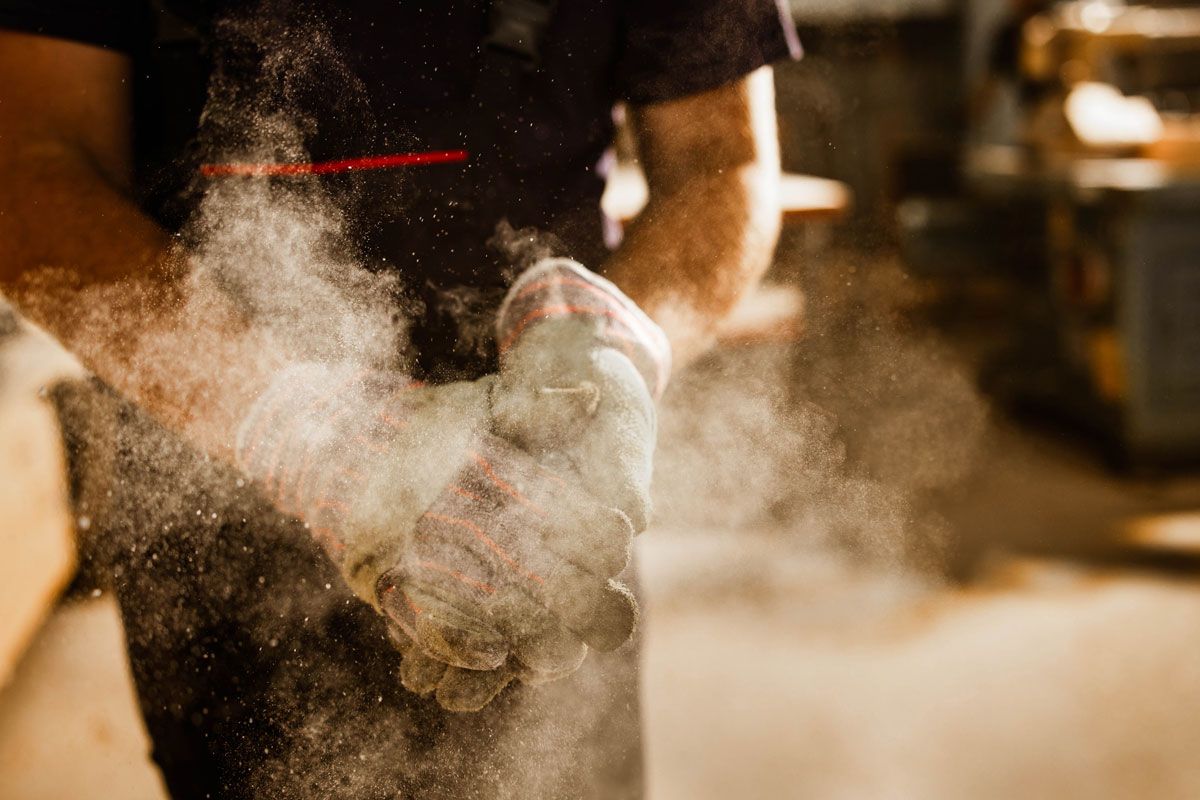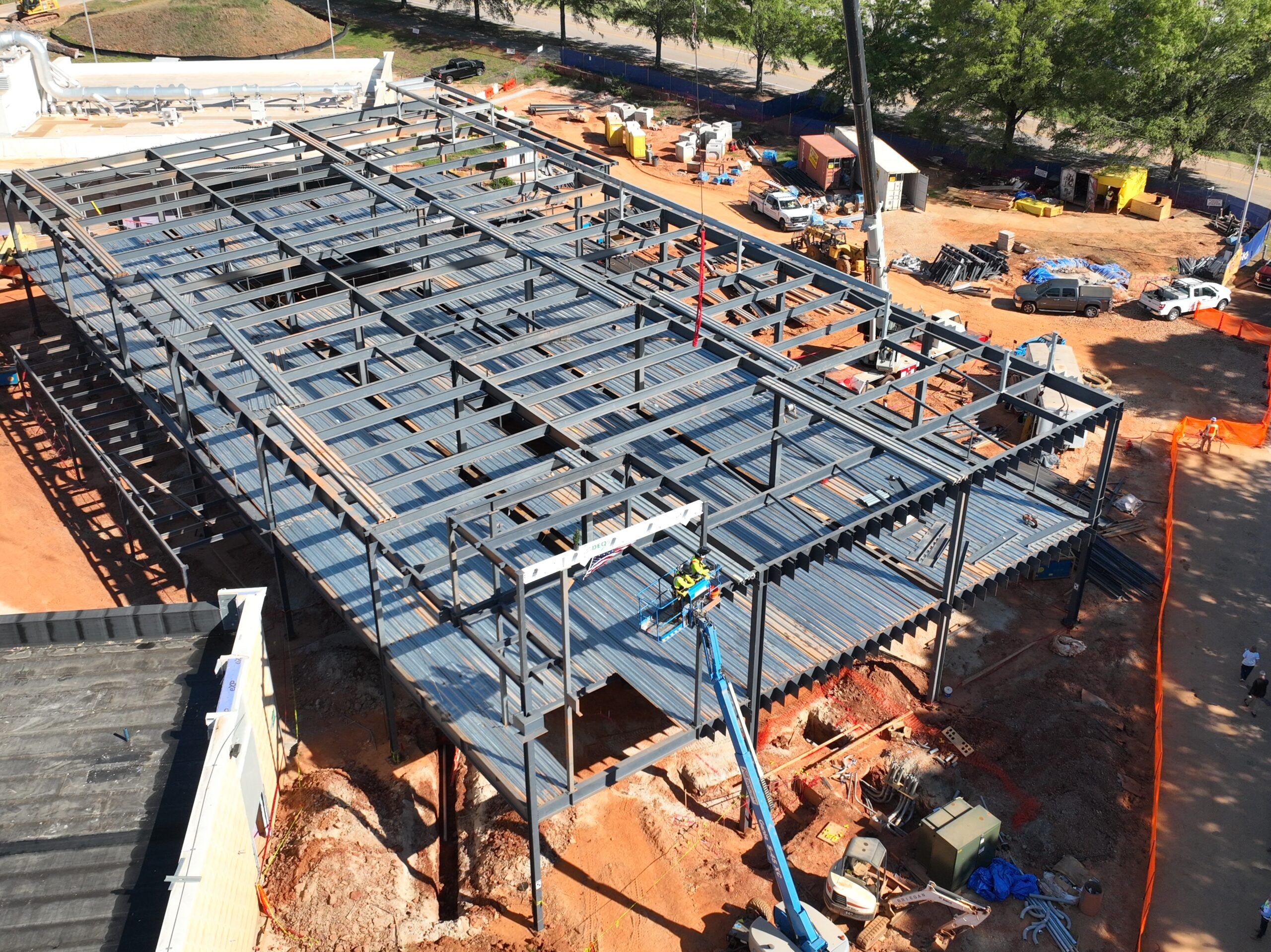Hard hats are the quintessential symbol of safety in the construction industry, but falling debris is only one risk workers face on a job site. The potential for exposure to hazardous materials present in the building process makes health a crucial consideration on construction sites.
Effective control of these threats to health and safety is paramount for protecting employees and keeping projects on track.
Understanding Health Hazards in Construction
In addition to traditional construction hazards, the industry presents various health hazards that stem from settled building dust, ultrafine particles (UFP) and chemical exposures. This combination of particulates and toxic substances can create an unsafe working environment and lead to health implications for those exposed. Construction crews aren’t the only ones affected though.
The impact of construction activities extends beyond the worksite, affecting local residents. Dust and chemical emissions can drift into nearby neighborhoods, potentially leading to health concerns among those living in proximity to construction sites. Factors such as the types of materials, the duration of exposure, and the effectiveness of safety measures all play a role in determining health outcomes.
Common Health Hazards
Settled building dust, ultrafine particles (UFP), and chemical exposures pose significant risks as they can exacerbate preexisting health conditions or lead to new complaints when steps to reduce exposure aren’t taken.
Exposure to Building Dust
Building dust is a common byproduct of construction activities, and it can contain many toxic substances that are hazardous to people. Dust can include particles such as fine particles, glass wool, asbestos, silica, as well as various chemicals. Chemicals may be integral to the material dust, or they may be airborne chemicals from other sources that have attached to the dust.
Common chemical contaminants found in building dust include flame retardants, plasticizers and pesticides. Studies indicate that exposure to these contaminants can lead to various health issues, including respiratory problems, hormonal disruptions, cancer, and developmental disorders in children.
Dust and its associated chemicals can enter the body through inhalation of airborne particles, ingestion of settled dust and skin contact.
Ultrafine Particles (UFPs)
There’s a basic principle when considering the health risks from exposure – the smaller the particle, the greater the risk. UFPs are tiny particles, less than 100 nanometers in size (or about 1/1000th of a human hair), that are generated during construction processes such as cutting, grinding and demolition.
Due to their small nature, it is easy for these particles to be inhaled and travel deep into the lungs and enter the bloodstream, potentially causing cardiovascular and respiratory problems or worsening currently existing issues.
Chemical Exposure
Chemical exposures on construction sites often arise from the use of solvents, paints and coatings, adhesives and other materials that contain hazardous substances. Many of these materials emit volatile organic compounds (VOCs) like trichloroethylene, methylene chloride, formaldehyde and dioxane and pose serious health risks, including respiratory irritation, neurological effects and long-term chronic diseases.
Supporting and Protecting Human Health
Protecting the health and safety of those in construction is vital because it not only ensures the well-being of workers, but also enhances productivity, reduces healthcare costs, cuts down on sick days, and promotes a culture of safety that benefits the whole industry.
Risk Assessment and Management
During planning stages, construction leadership should conduct a thorough safety review to identify any materials and/or processes that may pose health risks, and identify mitigation approaches to reduce worker and community exposure. Try to engage workers in risk identification exercises since they may be able to provide insights based on past experiences.
During the construction process, there are many methods that can be utilized to ensure worker and community safety:
* Monitor the site regularly. Throughout the building process, employ comprehensive monitoring strategies, such as air quality assessments and measurement of dust levels to gather valuable data to inform safety protocols.
* Control dust and UFPs from transporting or resuspending into the air. For large-scale projects this may require a bit more planning, but it’s doable whether constructing a new building or bringing new life with renovation.
In some projects, water is sprayed over the area to stop dust and UFPs from floating back up into the air, making it harder for them to be inhaled. There are also polymers that can be used for a similar effect but be sure to opt for a non-toxic choice for continued health protection.
Seal off the construction site with plastic sheeting to hinder dust and UFPs from leaving the site and affecting local residents.
Depending on the type of flooring present, it may be important to cover the floor so dust and UFPs don’t get trapped in the flooring or get tracked into other rooms. This can also be helped by using walk off mats between rooms or sections.Use portable air cleaners to remove dust from key areas.
* Promote good air quality.The three main steps to foster good indoor air quality are ventilation, filtration and source control. Most people in the field are probably familiar with the importance of ventilation and filtration, but source control is by far the most effective way to minimize exposure risks.
Using low emission building materials that emit minimal VOCs reduces the opportunity for chemical exposure. Another form of source control is to make sure processes that result in dust and debris production are done in areas with local ventilation, and use portable industrial HEPA filtration units.
* Wear personal protective equipment (PPE). PPE is the last line of defense against exposure to hazards. Even with all the proper safety measures in place, it is imperative to always wear the appropriate PPE tailored to specific tasks. PPE can include respirators, protective clothing such as coveralls and gloves, and eye protection such as safety goggles and face shields.
Addressing health hazards in the building process is essential for safeguarding the health and well-being of workers and the surrounding community. By implementing effective dust control processes, monitoring air quality and prioritizing the use of safer materials, the construction industry can mitigate these risks.
Proactive strategies not only enhance worker safety but also contribute to the overall health of the environment. As we advance towards more sustainable building practices, it is essential to remain vigilant about these hazards to ensure a safer and healthier future for all involved in the construction process.
Talia Sager is a Content Specialist at Chemical Insights Research Institute. She leverages her experience in healthcare and digital marketing to translate research findings into impactful messages.












